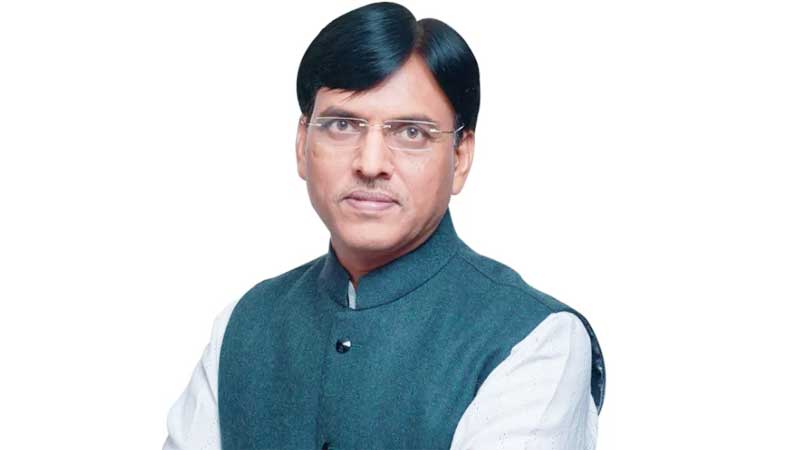We are envisioning an India where every Indian is concerned about having a life of quality. Continuous efforts are being made by the Government of India to ensure that the benefits of the country’s advanced healthcare facilities reach every individual,
Mansukh Mandaviya
India is a country of diversity, and unity in diversity is our identity. Prime Minister Narendra Modi has given the mantra of “One India, Great India” to maintain this diversity. We are envisioning an India where every Indian is concerned about having a life of quality. Continuous efforts are being made by the Government of India to ensure that the benefits of the country’s advanced healthcare facilities reach every individual, even those on the bottom rungs of the social ladder.
In India, there are approximately 706 different tribal communities, which constitute 8.6 per cent of the total population. Our tribal population is an integral part of our country’s rich cultural heritage. PM Modi has said, “the past, present, and future of India will never be complete without the indigenous communities.” The Government of India is fully committed to the health and development of the tribal population as a national priority, taking into account their ethical values, traditions, socio-economic conditions, and tribal organisations.
The Government of India is fully committed to the health and development of the tribal population as a national priority, taking into account their ethical values, traditions, socio-economic conditions, and tribal organisations
Sickle cell disease is a serious health challenge in India’s tribal population. Sickle cell is a genetic disorder in which a person’s red blood cells become distorted and take on a sickle-like shape. This disease is commonly found among tribal communities. It poses a significant threat to the future and existence of our indigenous populations, and it is imperative to prevent the spread of this disease. PM Modi has said, “the past, present, and future of India will never be complete without the indigenous indigenous populations, and it is imperative to prevent the spread of this disease in a timely manner. We have now decided to address this in a holistic manner.
I would like to express special gratitude to the Prime Minister who, in the central Budget for the financial year 2023-24, announced the launch of the national campaign “Sickle Cell Anaemia Elimination Mission 2047” to eradicate this challenge of sickle cell.
Sickle cell disease exists in two forms within the human body. One is the Sickle Cell trait, in which the individual does not exhibit any disease or symptoms, and lives a normal life. The second form is characterised by the presence of symptoms related to sickle cell disease. In 13 states of the country, namely Rajasthan, Gujarat, Madhya Pradesh, Chhattisgarh, Jharkhand, West Bengal, Odisha, Telangana, Andhra Pradesh, Tamil Nadu, Kerala, Karnataka, and Maharashtra, there is a high prevalence of this disease, and in four states of the country, namely Bihar, Assam, Uttarakhand, and Uttar Pradesh, there is a partial prevalence of sickle cell disease.
A person suffering from Sickle Cell Disease (SCD) faces numerous health problems, including persistent pain, fatigue, and anaemia, which significantly impact their quality of life. Efforts are being made to eliminate Sickle Cell Anaemia through two approaches. The first approach focuses on prevention, ensuring that new cases are not born, while the second approach involves managing the treatment and providing adequate healthcare facilities for individuals already affected by the disease. A comprehensive ecosystem is being developed to address these aspects and ensure access to proper healthcare and management for Sickle Cell Anaemia patients.
If two individuals with Sickle Cell trait marry each other, there is a high probability that their child will have Sickle Cell disease. By screening individuals for Sickle Cell trait before marriage, the spread of the disease can be prevented. The Ministry of Health, in collaboration with the Ministry of Tribal Affairs and the states, has formulated a plan to screen approximately 70 million individuals aged 0-40 years belonging to tribal and other groups residing in nearly 200 districts of 17 states within the next few years. The goal is to eliminate Sickle Cell disease by the year 2047. After screening, individuals will be provided with smart cards in their local language, enabling prospective partners to easily determine whether their future children will be affected by Sickle Cell disease or not.
To implement this entire programme, monitoring mechanisms will be established at various levels to ensure participation and bring awareness on a large scale. Individuals identified with the disease through screening will undergo regular testing, receive treatment and medication, vaccinations for other diseases, get dietary support, and have access to timely counselling services. All of these provisions will be ensured.
The government has allocated a sufficient budget, utilised advanced technology, provided training to healthcare workers, ensured necessary infrastructure, and made efforts in social awareness and participation to combat this disease. These endeavours are the result of strong determination and policy decisions.
Through the Ayushman Bharat scheme, the country has established a network of 1.6 lakh Health and Wellness Centres since 2018, which has played a crucial role in combating epidemics like Covid19. These centres will also play a significant role in eradicating sickle cell disease along with other diseases. We have trained healthcare workers in these centers to provide better treatment for sickle cell patients. PM Modi launched the Sickle Cell Anaemia Elimination Mission from Madhya Pradesh on July 1. This initiative will provide great strength to the fight against sickle cell anaemia. A web portal has been created using digital technology to track and maintain a complete record of sickle cell patients.
I believe that this mission will pave the way for the elimination of sickle cell anaemia by the year 2047, ensuring the preservation of India’s tribal population, which has kept the country’s heritage alive.
(The writer is Union Minister for Health and Family Welfare and Chemicals & Fertilisers)


